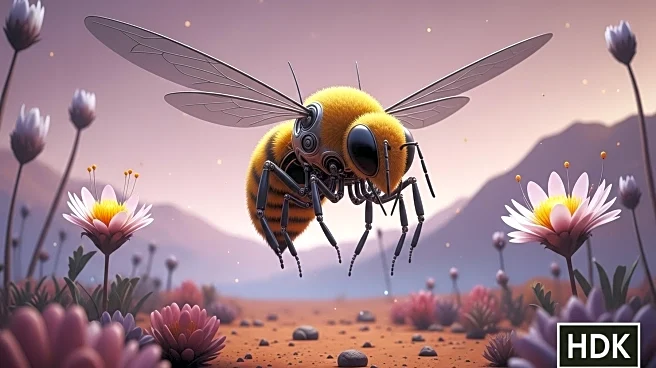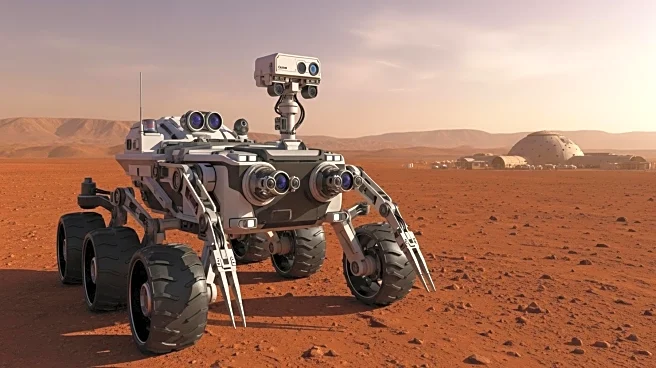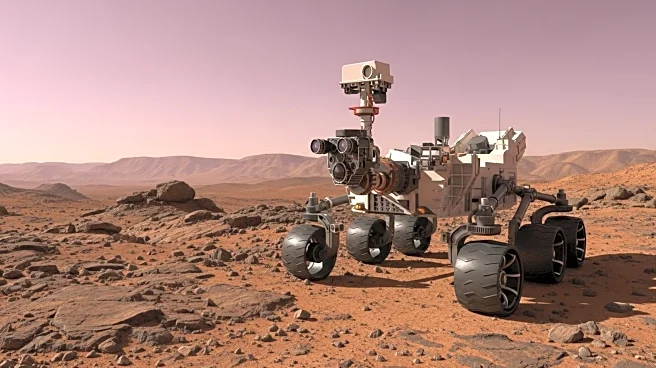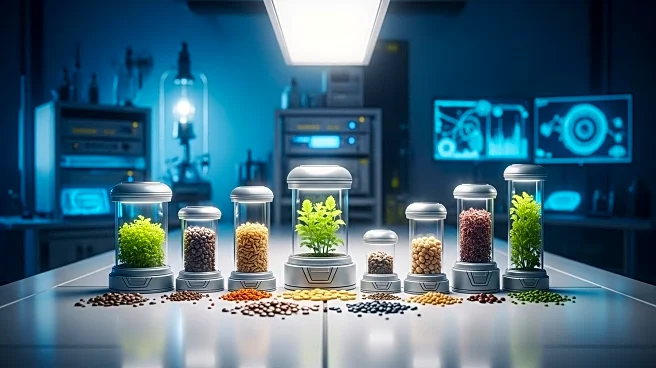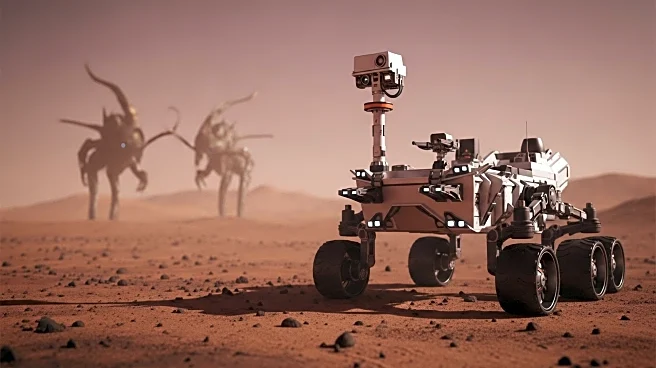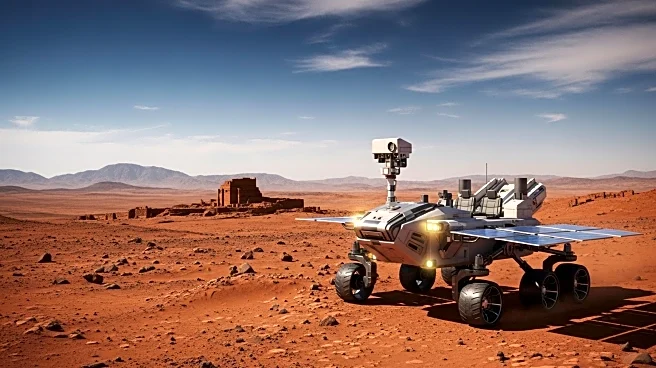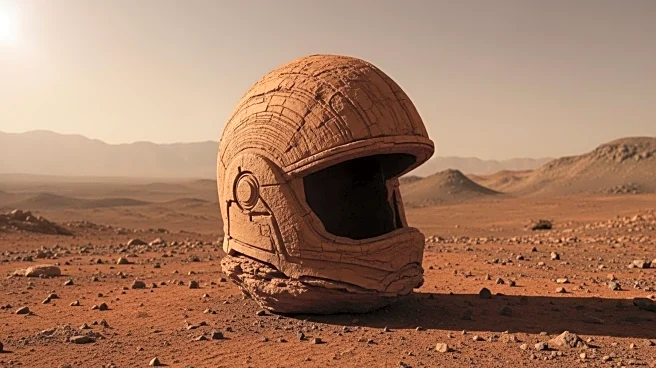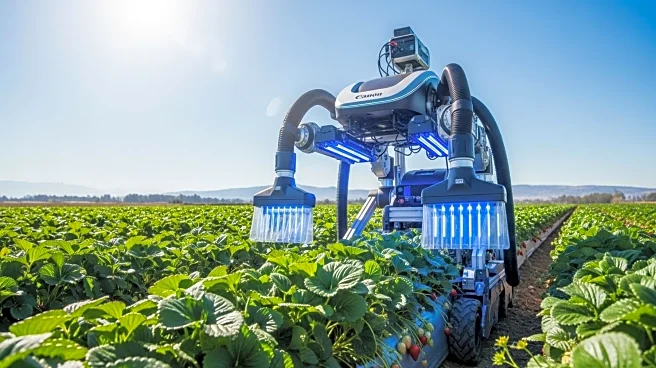What's Happening?
Researchers at the Massachusetts Institute of Technology (MIT) are developing a bee-like robot that weighs less than a paperclip and can flap its wings up to 400 times a second. This innovative machine, capable of achieving a maximum speed of two meters per second, is designed to mimic the maneuvers of bumblebees. The project, led by Yi-Hsuan 'Nemo' Hsiao, a fourth-year PhD student, aims to utilize these robots for tasks such as artificial pollination, potentially on other planets like Mars. The robots could be particularly useful in environments where natural insects cannot survive, such as warehouse farms with ultraviolet lighting. The development is part of a broader trend where technologists are drawing inspiration from nature to create robots that can perform complex tasks in challenging environments.
Why It's Important?
The development of these bee-like robots holds significant potential for agriculture and space exploration. In environments where traditional pollinators cannot survive, such as Mars or indoor farms, these robots could ensure the successful growth of crops. This technology could revolutionize agricultural practices by providing a reliable alternative to natural pollination, which is increasingly threatened by environmental changes. Additionally, the robots' small size and ability to navigate difficult terrains make them suitable for search and rescue missions, offering new solutions for disaster response. The project underscores the importance of biomimicry in advancing robotic technology, potentially leading to breakthroughs in various fields.
What's Next?
The MIT team plans to enhance the robots by adding sensors and batteries to make them fully autonomous. Currently, the robots rely on external power sources, but the goal is to develop onboard energy solutions. This advancement could take 20 to 30 years, according to Kevin Chen, an associate professor at MIT. The team is also working on a grasshopper-like robot that can hop and navigate diverse terrains, further expanding the potential applications of these technologies. Continued research into insect motion and behavior will guide future developments, aiming to deploy these robots in real-world scenarios.
Beyond the Headlines
The ethical implications of replacing natural pollinators with robotic alternatives are worth considering. While these robots offer solutions in environments unsuitable for insects, their widespread use could impact ecosystems and biodiversity. Additionally, the long-term effects of relying on robotic pollinators in agriculture need careful evaluation. The project also highlights the intersection of technology and nature, raising questions about the balance between innovation and conservation.


